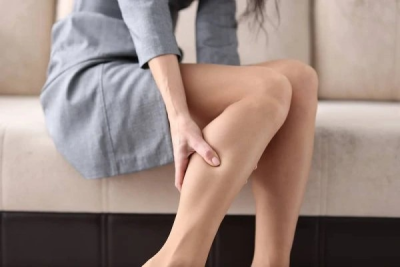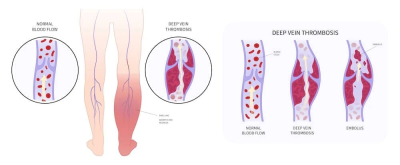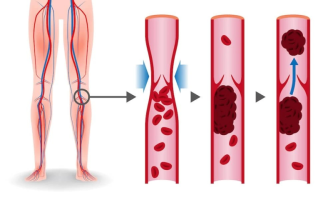How to treat vein inflammation with Hemp
Author: Lucie Garabasova
Vein inflammation more frequently affects the lower limbs, especially with a sedentary lifestyle. We’ll reveal what the symptoms of vein inflammation are and how you can relieve the unpleasant symptoms (pain, itching) with hemp – and we’ll also add some tried-and-true grandma’s remedies.
What is vein inflammation?
Vein inflammation is caused by one or more blood clots in a vein, which trigger inflammation. It usually occurs in the leg veins, but can also appear in the arm or other parts of the body (inflammation of the veins in the calf, arm, thigh, or ankle). Inflammation in the vein causes pain and irritation and can block blood flow in the veins. It can occur in both superficial and deep veins.
Superficial vein inflammation = phlebitis
Superficial phlebitis affects veins near the surface of the skin. This condition is rarely serious and usually resolves quickly with proper care. However, it is important to make sure the condition doesn’t worsen. In that case, it could become deep vein inflammation, which can be a health risk.
Deep vein inflammation = thrombophlebitis
Deep vein phlebitis affects larger vessels, usually deep within the legs. Large blood clots can form, which may break loose and travel to the lungs. This is a serious condition called pulmonary embolism.
Vein inflammation in the legs, both deep and superficial, brings unpleasant symptoms, which we can alleviate (with the help of natural dietary supplements).
Risk factors for vein inflammation
- Long periods of inactivity – bed rest or prolonged sitting
- Sedentary lifestyle – lack of movement
- Obesity
- Smoking cigarettes
- Certain health issues that increase blood clotting
- Injury to hands or legs
- Hormone replacement therapy or contraceptive pills
- Pregnancy
- Varicose veins
What are the symptoms of vein inflammation?
- Redness appears on the skin along the superficial veins, which is sensitive (it may also be warm or hard)
- The area around the vein may itch or swell
- The area around the vein pulses or burns
- Pain
- Symptoms of vein inflammation are usually worse in the morning, for example after a night's sleep. Low-grade fever may also occur.
If an infection is also present, symptoms may include redness, high fever, more severe pain, swelling, or skin breakdown.
Images of vein inflammation
Vein inflammation blocks blood flow in the veins, which can result in blood clots.
Deep vein inflammation
It may present similarly to superficial phlebitis, but some people may have no symptoms at all.
Some may experience pain and swelling of the entire limb. For example, a lower limb may swell without an obvious cause. Some people also have a fever from an overlapping bacterial infection and skin discoloration or ulcers if the condition becomes chronic and was not previously adequately treated.
When to see a doctor for vein inflammation?
If you have symptoms of swelling, pain, and inflamed superficial veins in your arms or legs, call your doctor. If the condition does not improve within a week or two, or if it worsens, be re-examined to make sure you don't have a more serious condition.
Deep vein thrombophlebitis requires immediate medical attention. If you have any of these symptoms, go to the emergency room where you will be examined:
- High fever with any symptoms in the arm or leg
- A lump in the leg
- Severe pain and swelling of the arm or leg
- New, unexplained shortness of breath, which may be the first sign that a blood clot has already reached the lungs; if you are having trouble breathing, call emergency services.
Examination of vein inflammation in the legs and arm
xaminations of vein inflammation include:
-
D-dimer is a blood test that measures a substance released when a blood clot dissolves. If this blood test is negative and you have no risk factors, it is unlikely that you have a blood clot.
-
Ultrasound can detect clots or blockages in blood flow, especially in larger, more proximal veins (upper leg veins). A small handheld device (probe) is pressed against your skin and helps identify blood clots and the site of obstruction. This is a painless, non-invasive examination.
-
Occasionally, a venogram is needed to identify blood clots in smaller, more distal veins. This is an invasive procedure in which an X-ray dye or contrast agent is injected into a vein in the leg, and then an X-ray is taken to track the dye flow up the leg.
Medical treatment of vein inflammation
If the examination shows superficial vein inflammation and you are otherwise healthy, you can probably go home. You will need to use compression stockings and likely anti-inflammatory medications to manage symptoms. Additional treatment includes elevating the arm/leg and applying warm compresses. Only in a few cases are antibiotics needed.
If you have previously had deep vein thrombophlebitis or if the phlebitis might spread to deep veins, you will need to take blood thinning medication (anticoagulants). The duration of anticoagulant therapy is usually between 3–6 months or 3–12 months if it is the first case of deep vein thrombosis.
If signs of infection occur, you will need to take antibiotics.
If superficial vein inflammation has progressed and affected deep veins, it is a serious condition that may require hospitalization for treatment and further examination.
How to treat vein inflammation with hemp?
CBD hemp has anti-inflammatory effects, which help to counteract vein inflammation. However, this does not mean that CBD will cure vein inflammation in the legs or arms. CBD can help promisingly with the secondary symptoms of vein inflammation, such as: pain or itching, without side effects.




